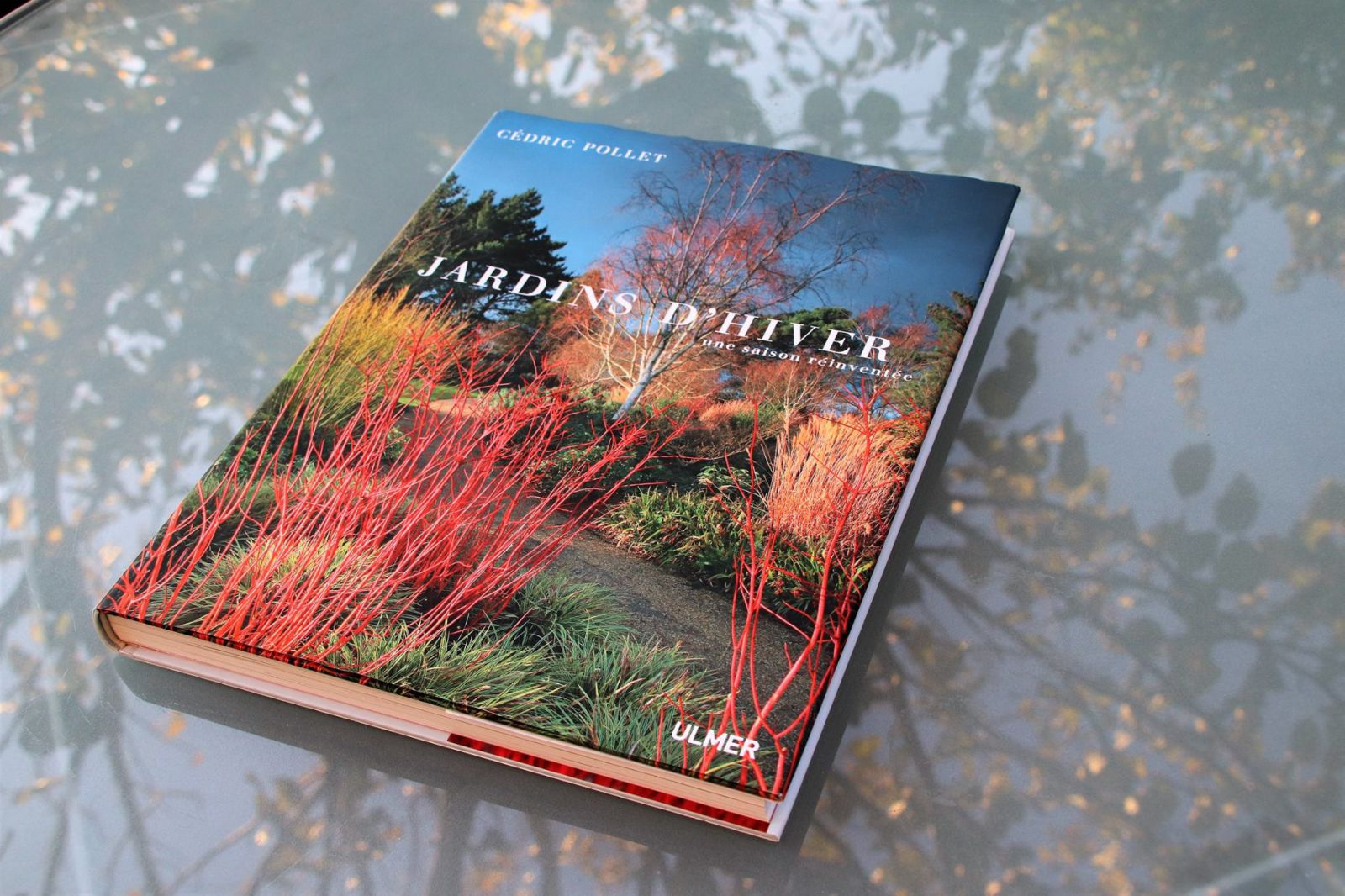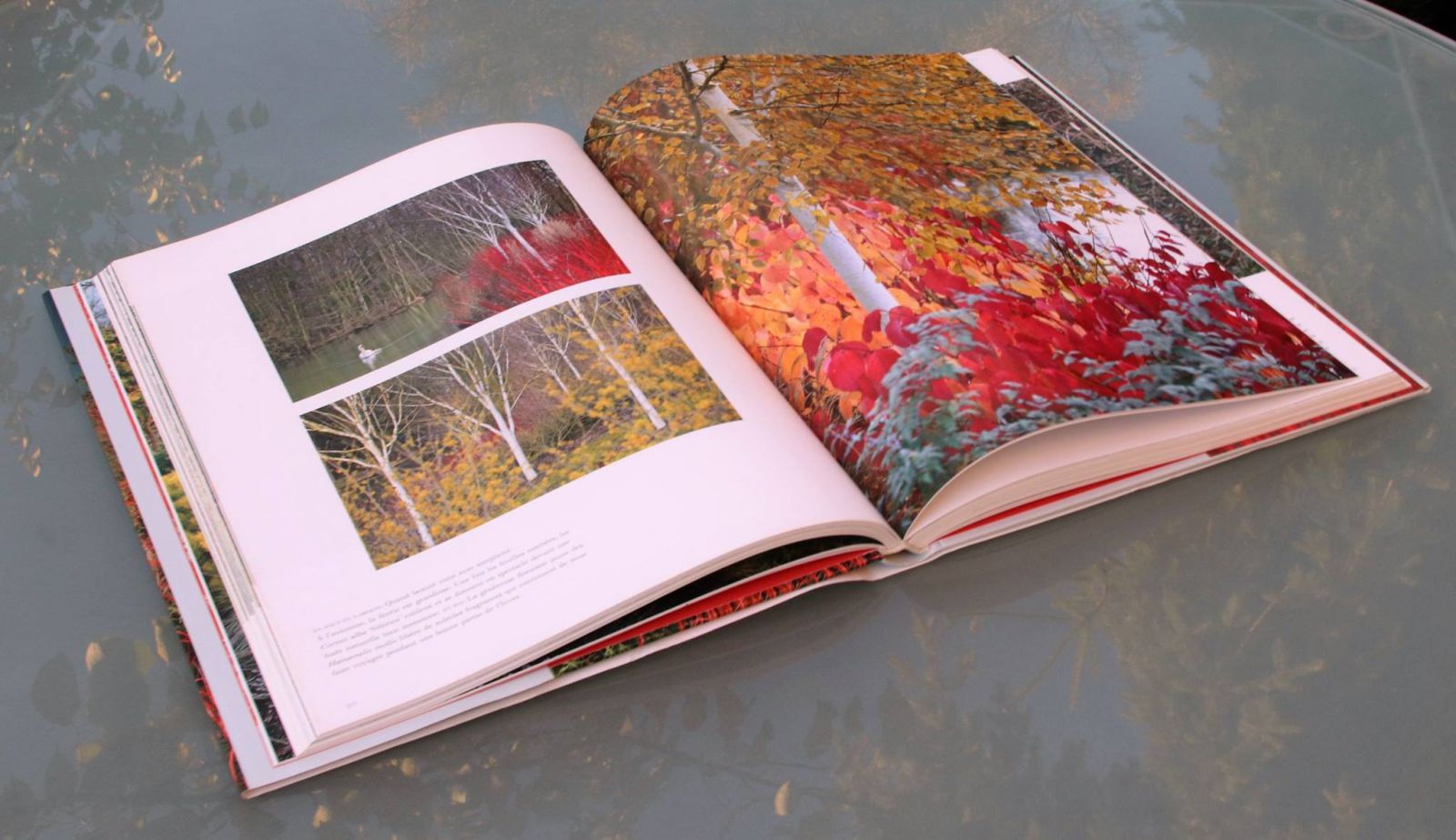This Friday, November 9, 2018, at 19:00, at the Botanical Garden of Liège, will be held a conference by Cédric Pollet.
He will tell us about "winter gardens".
We can not wait to attend. Besides, hurry up, there are still some places.
Reservations are made by email to the following address: danielalbert@skynet.be.
This conference is organized by the association 'Le Secateur', a group of garden enthusiasts.
We take the opportunity to talk about this book. Like many, we are not insensitive to the quality of this book, as much for the photos, as for the story that is told; but especially for the richness of the gardens presented.
We had the chance to visit many, remarkable. We can only advise you to get the book and arrange visits to these places.
If the book is an enchantment, finding oneself in these paradises is an ecstasy.
We will also schedule, as much as possible, visiting the gardens, which we have not yet walked.

If the 4 heartbeat is particularly well chosen: The Pond Launay, Garden Wood Marquis, Sir Harrold Hillier Gardens, Bressingham Gardens; the other gardens mentioned are not left out. We can only recommend visiting Wisley, Savill Garden, Rosemoor, The Vasterival, among others.
For visits:
Etang de Launay, You have to contact the Hennebelle nurseries, who organize regularly and in autumn-winter, guided tours of the garden, by Jean-François Dantec himself. The next is organized on 26/10! http://www.hennebelle.com
Jardin du Bois Marquis, you have to contact Mr. Christian Peyron directly (+33 6 08 99 02 01)
Le Vasterival, several visits are scheduled in the agenda, including one on bark on 09/11. https://www.vasterival.fr
English gardens are usually open to the public.

Cédric Pollet's book is intoxicating and inspiring.
What good ideas to give relief to his garden in winter. What we like to emphasize is the importance of conifers.
'Jardins d'hiver' is the third and last book of a trilogy on bark. It is therefore normal that the accent is especially given to trees and shrubs with this decorative quality.
But Cédric gives us to understand, that these elements are even better highlighted with other plants, such as grasses, heather, but also the evergreen foliage conifers of which carve the most beautiful part.
The second part of the book is devoted to beautiful winter plants, starting with bark and colored wood, but it also speaks of flowers, fruits, foliage, plumes or dried umbels. His approach to winter gardens, outdoors, is unquestionably well supplied, full of examples and scenarios.
A winter garden is multiple, and will be all the more beautiful, if it is varied. If the first winter gardens were mainly coniferous, as Cédric Pollet tells, the gardeners have understood that the beautiful barks could stand out more.
What we remember
If we follow the evolution of the winter garden for the last 30 years, in the book, we find that the French had first, only retained the interest of the beautiful barks, forgetting a little, the plants originating from these gardens: conifers.
We are personally delighted, when we visit the Etang de Launay, that Jean Louis Dantec, whose garden is more or less the same age as ours (a few more years), uses with taste, and without much restraint, the conifers.
If history shows us these subtle variations of interest, we are convinced today that we can find the true balance for a harmonious and less exclusive garden.
Small flat
Franco-French exclusivity.
The many plants mentioned in the book are quite complicated to obtain. And especially with the nurserymen cited at the end of the book, which are, moreover, only French. The buffs know it and go out, borders to go find the pearls in England, Belgium and the Netherlands, mainly. All the owners of these beautiful gardens do it, we can certify it to you. It's a shame to silence the information.
Note, for example, that Stone Lane Gardens, cited and photographed in the visited gardens of the book, is also a sharp nursery in bark birches, precisely. But this is not specified.
Conclusion
This book is a real gem, an indisputable must-have of your library. It is full of information, touching stories, beautiful examples and especially sensitive and accurate images.
But you must also be able to read it between the lines, because it contains innumerable treasures tus.